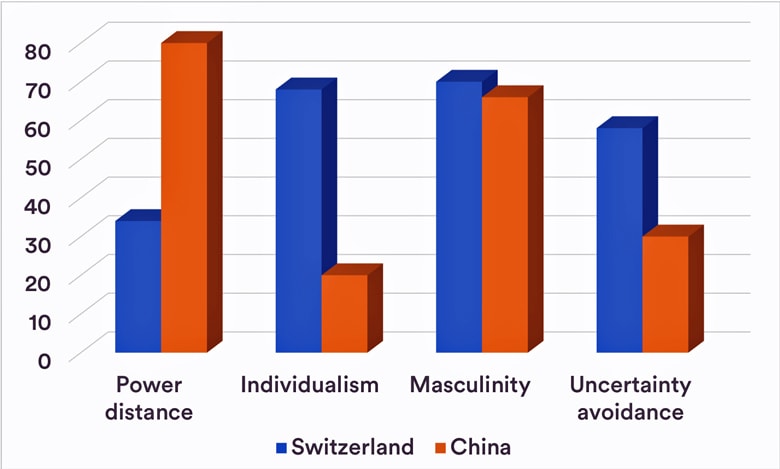Culture Compass China
Typically Chinese!
The “Guanxi” principle
The Culture Compass China says, at least since Confucius, each individual is said to be tied into a network of relationships, the guanxi. Relying on other members to open “back doors” is considered legitimate.
Accepting one thing and its opposite
The Chinese way of thinking allows for ambiguity. Rules are not isolated, but interpreted depending on the context. Opposites are thus integrated.

Attitudes and Norms.
Maintain harmony, save face
Great value is attached to avoiding embarrassment. Benevolence is the rule, blaming is a no-go.
Hierarchie und Führung
Hierarchies are clearly defined and strictly lived. The superior deserves obedience. However, he treats the employees benevolently.
Kommunikationsstil
Chines adopt an indirect style of communication and often allows for ambiguities. The interlocutors should always strive to maintain harmony.
Hints for Team-Leaders by Culture Compass China.
Employees generally expect instructions from their superiors and are less inclined to represent their own opinions. Expectations within the framework of a participatory management style usually lead to serious disappointments on both sides. In addition, attention must also be paid to the seniority of the MA, which also represents an informal hierarchical feature. Direct criticism is problematic. It is advisable to avoid losing face on the part of the employee. In line with their collectivist culture, Chinese executives tend to treat all employees equally. In principle, a balanced distribution of rewards should be ensured.
Cultural Dimensions.

For a deeper knowledge of Chinese culture, please access our study on Leadership and Management in China.
